Gallery Network
7 Questions for Lorenzo Vigas on the Lasting Legacy of His Father, Pioneering Venezuelan Modernist Oswaldo Vigas
The first monographic exhibition of Oswaldo Vigas in Asia is being presented by Kwai Fung Hin Art Gallery, Hong Kong.
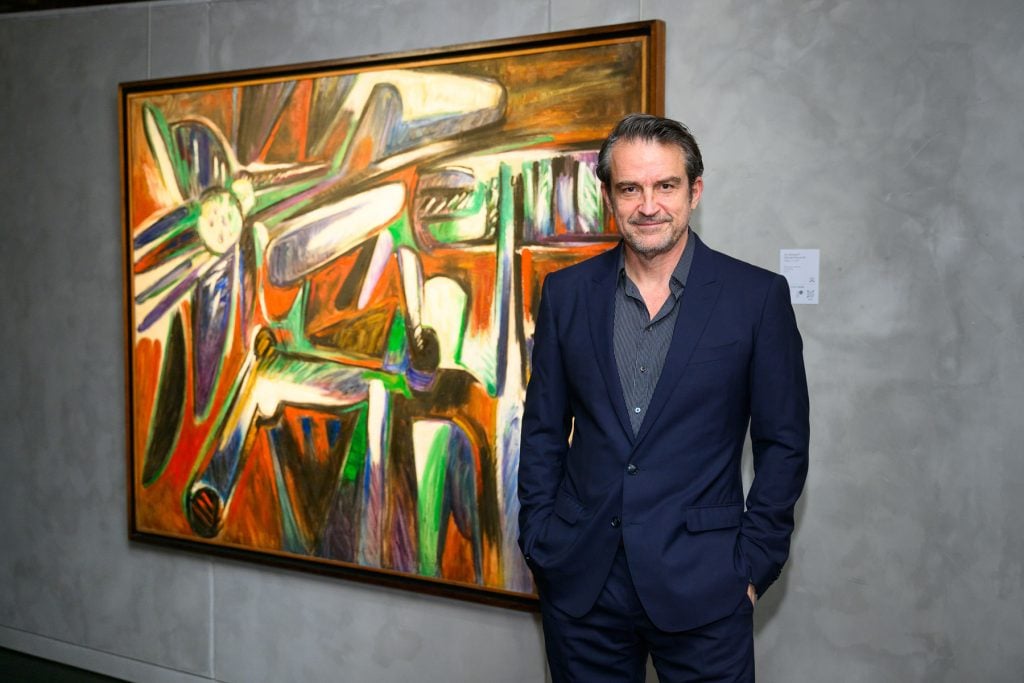
The first monographic exhibition of Oswaldo Vigas in Asia is being presented by Kwai Fung Hin Art Gallery, Hong Kong.

Artnet Gallery Network

This year, Hong Kong-based Kwai Fung Hin is presenting “Oswaldo Vigas: Return, Always Return,” an exhibition marking the first solo exhibition in Asia of the renown Venezuelan artist. Produced in collaboration with the Oswaldo Vigas Foundation, the show provides an overarching look at the influential artist’s life and practice that has come to be recognized as a defining moment in the development and proliferation of Latin American Modernism. The exhibition also coincides with the 100th anniversary of the artist’s birth and engages with the broadening attention being given to 20th-century Latin American art—specifically within the context of Asia.
On view through January 31, 2024, the exhibition traces the development of the artist’s work, including how he was influenced and inspired by time spent in Europe amid the rise of the avant-garde, as well as by African and early South American artistic practices.
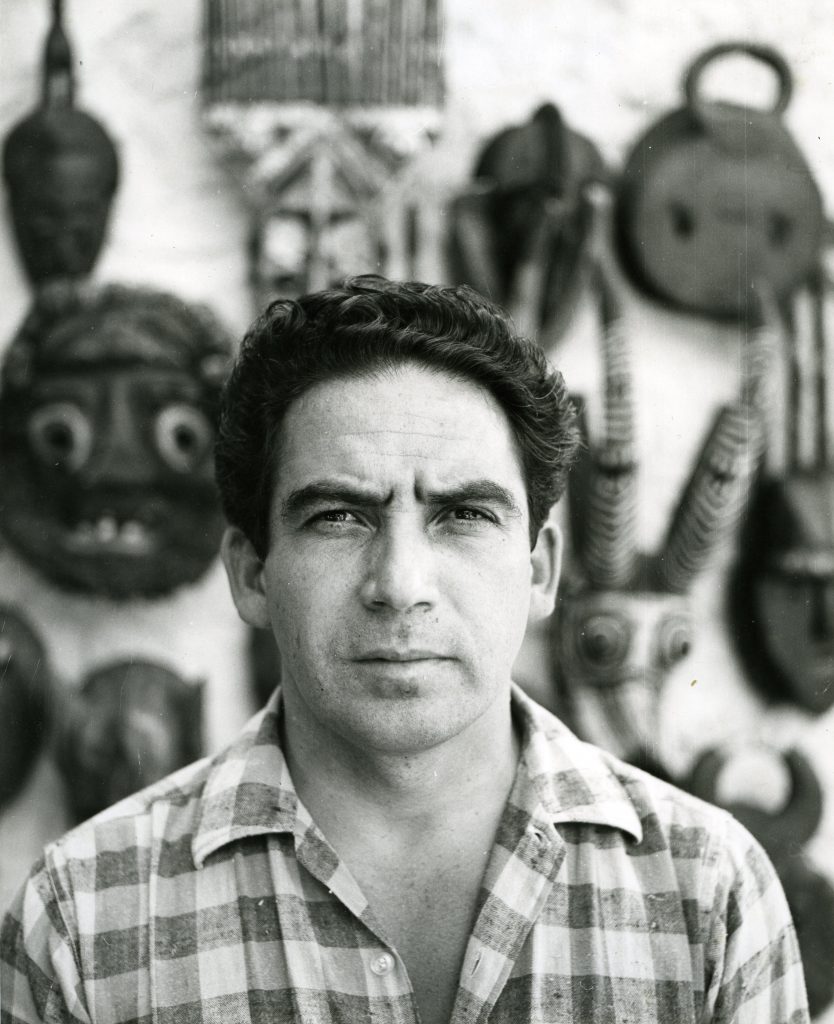
Artist Oswaldo Vigas. Courtesy of Kwai Fung Hin Art Gallery.
The preservation and promotion of Vigas’s legacy has been the core mission of the Oswaldo Vigas Foundation, which is chaired by the late artist’s own son, Lorenzo Vigas, an award-winning director and screenwriter. He won the Golden Lion at the 72nd Venice International Film Festival in 2015, and subsequently produced El vendedor de orquídeas (The Orchid Seller) (2016), a feature length documentary about his father.
We reached out to Lorenzo Vigas to learn more about the importance of his father’s first show in Asia, and how he sees his legacy contributing to Modernism still today.
What is the significance of exhibiting the work of Oswaldo Vigas now, and in Hong Kong? Can you discuss what initiated this exhibition?
This exhibition in Hong Kong is the outcome of efforts initiated by the Oswaldo Vigas Foundation immediately after the artist’s death in 2014 to showcase his oeuvre beyond the borders of Latin America. The primary tool for carrying out this work has been the online publication of the artist’s complete catalogue raisonné, which has allowed an international audience to directly and immediately explore the artist’s seven decades of work.
Catherine Kwai and Edward Fung, founders and owners of the Kwai Fung Hin Art Gallery, decided to represent the artist’s work throughout the Asian territory after a series of discussions with the Foundation. The exhibition in Hong Kong is just the first in a series of shows that will introduce the artist to the region.
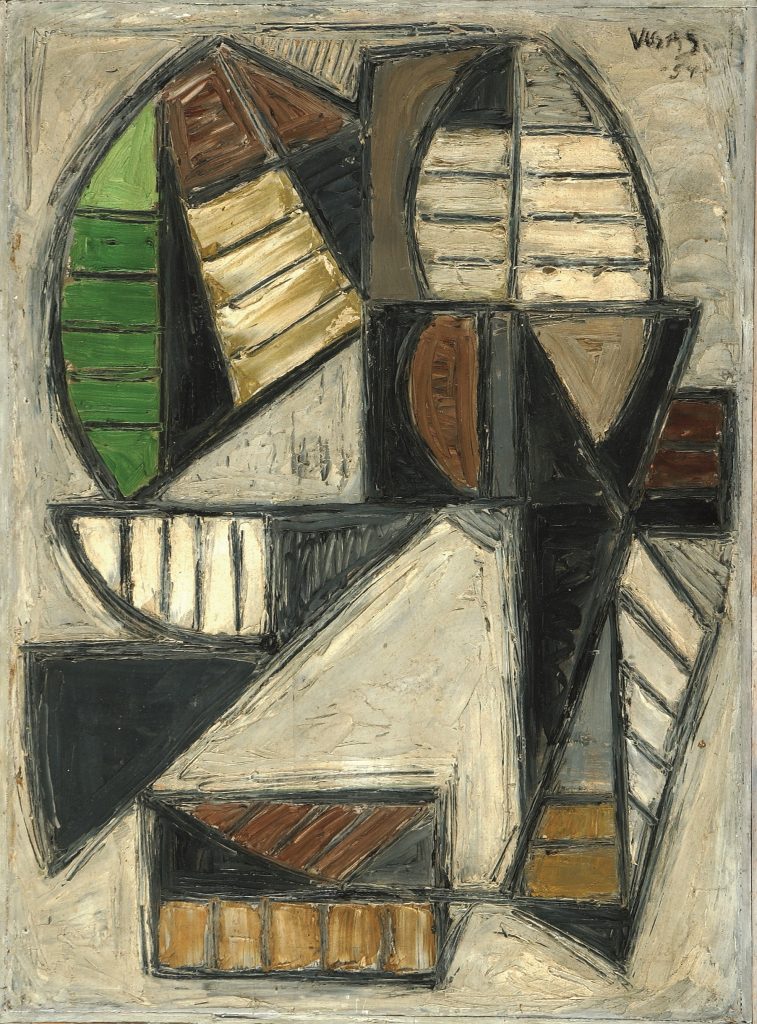
Oswaldo Vigas, Composición en Gris (Composition in Grey) (1954). Courtesy of the Oswaldo Vigas Foundation and Kwai Fung Hin Art Gallery.
What do you hope this new audience of Vigas’s work takes away with them?
Oswaldo Vigas is undoubtedly one of the most complex Modernist artists on the international spectrum. His work freely navigates between figuration and abstraction, spanning 70 years of uninterrupted creativity. I believe that the freedom to move between styles while always maintaining a connection to his primary influences—pre-Columbian and African art—is something that will captivate the attention of new audiences.
Do you have a particular favorite work included in the exhibition? Why?
This exhibition comprises highly significant works from each of the periods in the artist’s career. Beginning with his early figurative works in Venezuela, where he created a mythical series inspired by pre-Hispanic art and earned recognition in his native country, to his formative years in Paris, navigating the prevailing movements of the time in Europe—informalism and Abstract Expressionism. Upon his return to his homeland and reconnection with figuration, the exhibition showcases exceptional works from each of these periods. Personally, I find it impossible to choose a favorite.
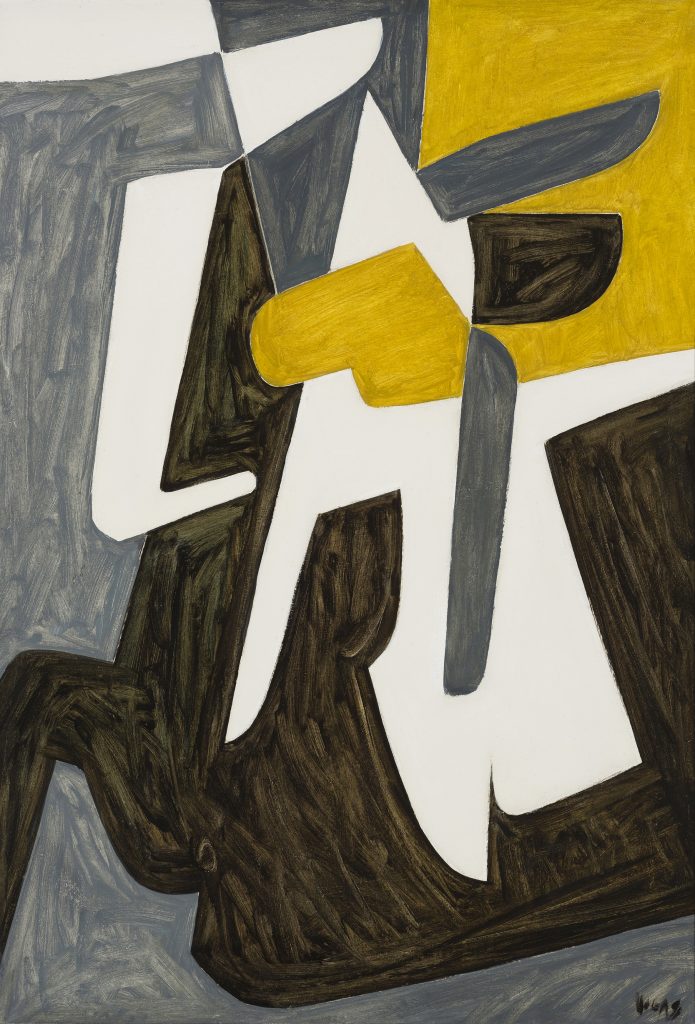
Oswaldo Vigas, Asmodé II (Asmodeus II) (1972). Courtesy of the Oswaldo Vigas Foundation and Kwai Fung Hin Art Gallery.
Attention for and appreciation of Latin American art has increased in recent years—in what ways do you see Oswaldo Vigas and his work standing out from among his fellow Latin American artists?
The work of Oswaldo Vigas stands out among that of other Latin American artists for its complexity. In contrast to some artists who, after gaining recognition, adopt a comfortable and conformist position, Oswaldo Vigas consistently took the opposite stance. Upon receiving recognition for one of his series, he would completely transform his artistic language, achieving a body of work that is astonishing in its expressive diversity, always remaining faithful to his origins.
How do you see Vigas’s artistic legacy influencing understandings of Modernism today?
The ability to move freely between abstraction and figuration while unraveling the origins and influences of the Latin American continent is undoubtedly a significant contribution that the Venezuelan artist has made to the global Modernist movement.
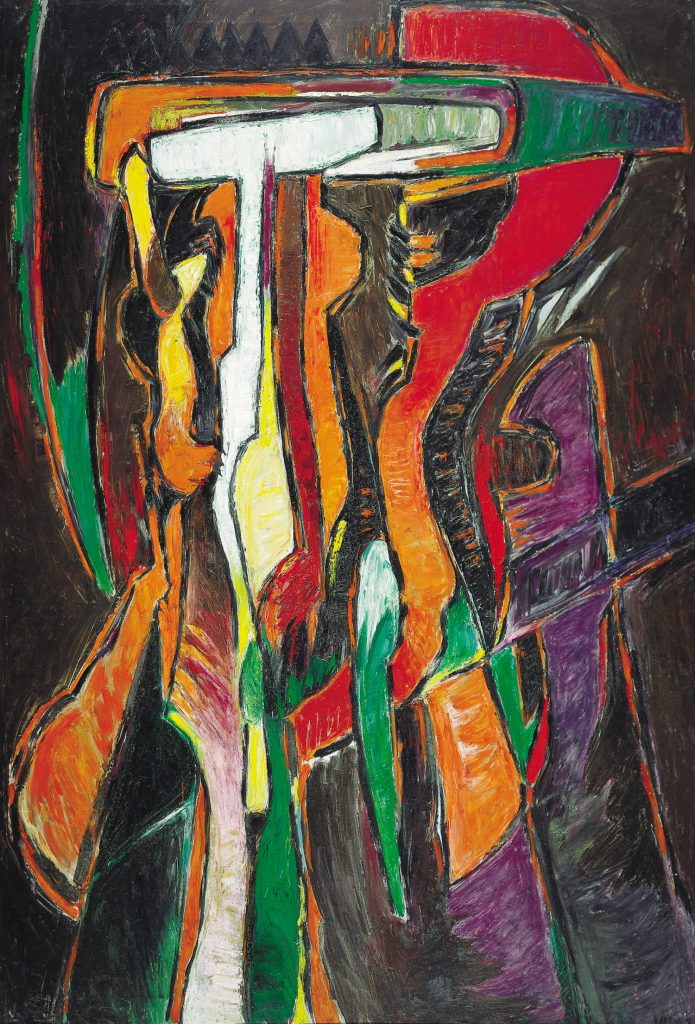
Oswaldo Vigas, Ancestral (1976). Courtesy of the Oswaldo Vigas Foundation and Kwai Fung Hin Art Gallery.
A portion of the exhibition highlights his travel between the Americas and Europe, which exposed him to various avant-garde movements. In what ways did global art movements influence his practice?
A striking aspect of Oswaldo Vigas’s work was his ability to remain deeply rooted in his origins while navigating the movements that dominated the European art scene in the 1940s, ’50s, and ’60s. Each of his works carries its own personal baggage. He always considered himself a mestizo artist, much like his country, Venezuela, inheriting influences from pre-Hispanic, African, and European cultures. Similarly, all his works are bound together by an invisible thread that connects them.
Last year, the foundation published its first catalogue raisonné of any Venezuelan artist. What is the significance of this project for the artist, foundation, and Venezuelan art?
Certainly, the Catalogue Raisonné is the most significant project undertaken by the Oswaldo Vigas Foundation. Thanks to it, the work of the Latin American artist is captivating new audiences and exploring new horizons. Just as the Asian continent is currently discovering it through the efforts of the Kwai Fung Hin Art Gallery, we invite everyone to explore it by visiting: https://catalogue.oswaldovigas.com/.
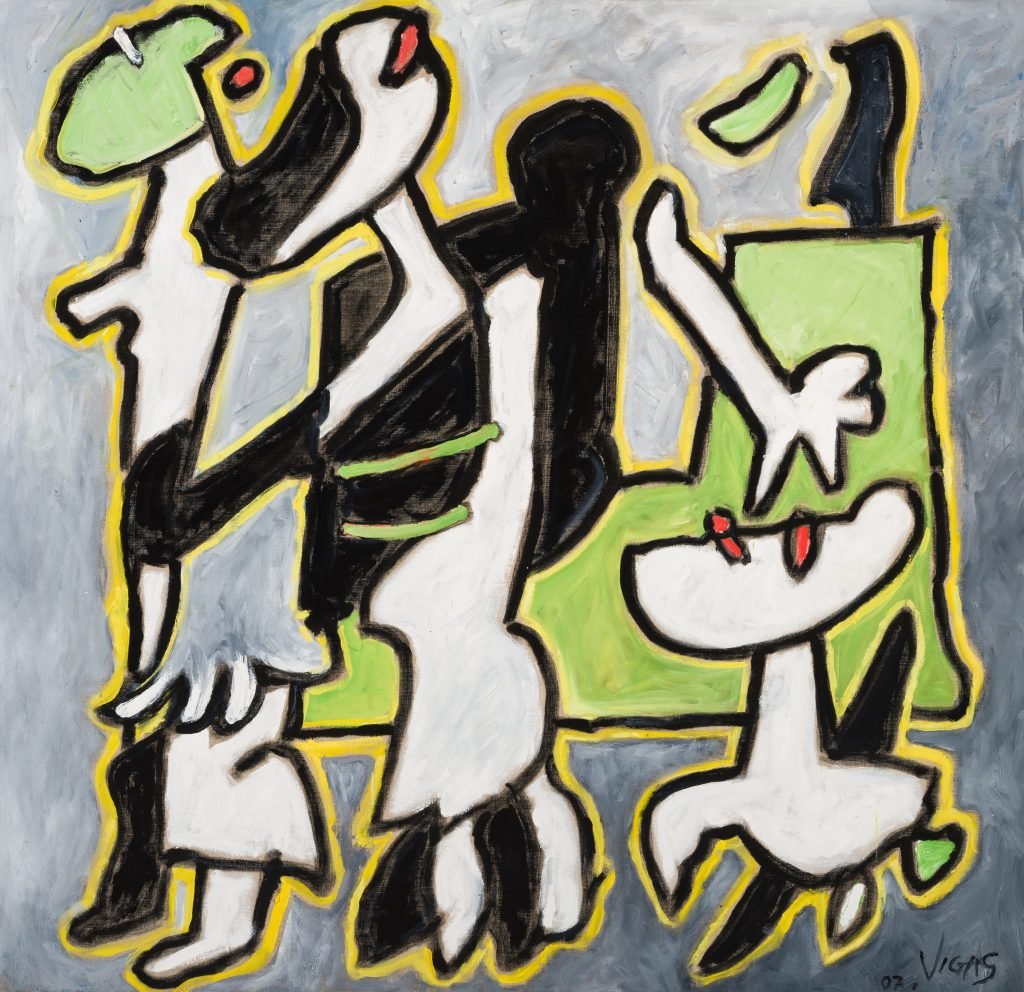
Oswaldo Vigas, De Paseo con su Mascota (Strolling with Mascot) (2007). Courtesy of the Oswaldo Vigas Foundation and Kwai Fung Hin Art Gallery.
“Oswaldo Vigas: Return, Always Return” is on view at Kwai Fung Hin Art Gallery, Hong Kong, through January 31, 2024.